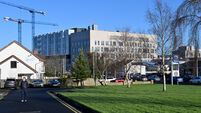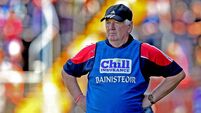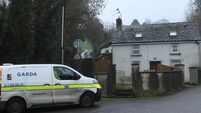Cormac O'Keeffe: Irish Defence Forces will have to fight to realise this ambitious report

The report says Ireland is a potential target due to its profile as an EU member and as an active participant in multinational peacekeeping missions. File Picture: Leon Farrell/RollingNews.ie
As soon as the ink was dry on the mammoth Commission on the Defence Forces (CDF) report, the focus was turning to the costs, rather than to the threats.
How would such substantial increases in funding — anywhere from 50% of the existing budget up — get over the line amid much bigger funding crises in housing and health, including child mental health?
Amid rising inflation and a mind-boggling national debt, support in the Department of Public Expenditure for increases way over and above that of other departments might be difficult to secure and sustain.
In its 256-page report, the CDF offers the Government three options — level of ambition (LOA) 1, 2, and 3. It all but dismisses LOA 1, as it equates to keeping the status quo. This involved an “exceptionally low level” of current expenditure, it says.
LOA 3 would see a tripling in the defence budget, to almost €3bn per year. But this would provide a “credible defence”, comparable to countries that are similar to Ireland.
Knowing that this “credible defence” might be politically unpalatable, it recommends LOA 2 in the short term. This would involve a 50% increase in budget, or €1.5bn annually, and would plug immediate gaps and allow for expansion and investment.
But focusing on costs is looking at the problem all wrong, as the report makes pretty clear. It paints a fairly sobering picture in terms of the threats facing Ireland and the risks — financial, reputational and human — of not beefing up our defences. The CDF warns of a “growing risk” of:
- Hybrid aggression against Ireland or the EU as a whole;
- Threats of attack via land, sea, and air (and online) against Ireland’s neighbours and EU partners;
- Ireland’s tech industry and IT infrastructure becoming a “proxy battlefield” for competing great powers.
The report says Ireland is a potential target due to its profile as an EU member and as an active participant in multinational peacekeeping missions.
On top of that are the knock-on impacts of conflict along the borders of Europe, in terms of migration and Irish jihadists or right-wing extremists travelling to fight there and returning home.
The report points to a “growing need for deeper engagement” with the EU on common security challenges and rivalries among the world powers of the US, China, and Russia.
This week Tánaiste Leo Varadkar told the Dáil that there is a possibility of “cyberattacks and disruption in the EU”, if there is a conflict between Russia and Ukraine.
The report says the risk of a conventional military attack on Ireland “remains low”, but said the threat of a ‘hybrid’ attack is more real.
Hybrid is below the threshold of an act of war, which seeks to “target the vulnerabilities” in a state. It can include cyberattacks, misinformation (also known as disinformation), election interference, and various forms of political, economic, and other pressures.
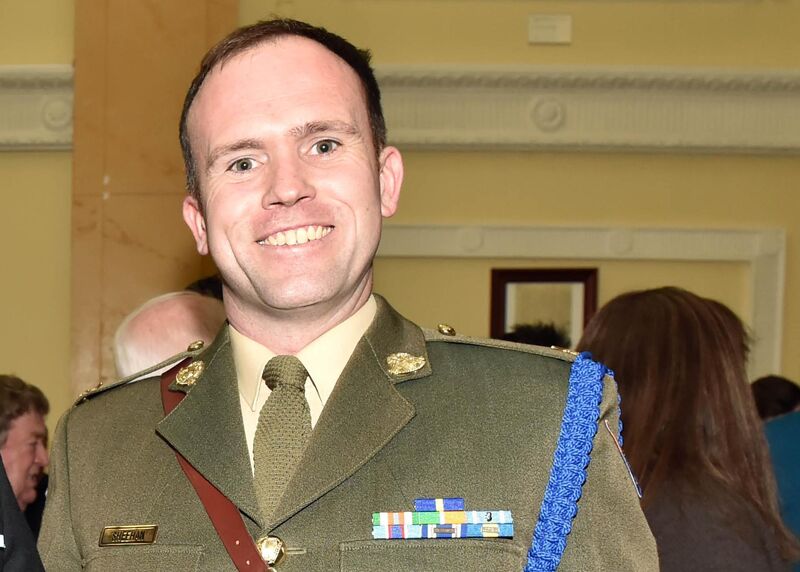
The report said hybrid attacks can aim to “polarise democratic societies and undermine governance”.
It points out that these attacks could be conducted by hostile states or groups and refers to “online global extremist sub-cultures”, including right-wing extremists and jihadists.
As seen in Ireland, right-wing and extreme nationalist groups are very active online and, as Europol, the EU police agency, has warned, Irish extremists have linked up with foreign, often European, right-wing groups.
Last October, Defence Forces (DF) cyber officer Commandant Ken Sheehan said the spread of disinformation over cyberspace is “arguably the most significant threat to democracy in a generation”.
He said that in 2020 evidence was found that 81 countries used social media to “spread propaganda and political disinformation”, an increase of 11 on 2019.
The CDF report said this required a “whole of government” response, with the Defence Forces expected to play a “significant role”.
The hybrid threat forms part of a cyber security threat, the report says. It says that despite cyber capacity being identified in the Defence Forces as a need, specifics and policy statements on cyber or counter-hybrid warfare are “low to negligible”.
The commission found that various Communications & Information Services (CIS) Corps operate under different commands across the Army, Naval and Air Corps.
It says that even under the current state of the Defence Forces, the CIS units “fall far short of the numbers required to meet LOA 1”.
It says the fully staffed CIS should have 350 personnel, but is 35% short at officer level and 25% short at technician level.
Under LOA 2, there would be a new Joint Cyber Defence Command, which would require a further 100 personnel. This recruitment would require five to 10 years to implement, it said.
The commission said that under LOA 2, the Defence Forces would have the capability to defend the State from a cyber military attack and deter aggressive acts.
Broadening this remit, the commission said the ultimate objective would be that the DF could identify and intercept cyberattacks or other hybrid aggression “in order to defend Ireland’s sovereignty, its sovereign rights, its national interests and resources”.
Elsewhere, the report said Joint Cyber Defence Command would have three main types of operations: defensive operations; intelligence operations and “offensive operations for defensive purposes”. It said that a “skills gap analysis” needs to be carried out.
The commission does stress close cooperation with the National Cyber Security Centre (NCSC) and Garda Security and Intelligence on the cyber and disinformation area.
But the exact function of who does what remains somewhat unclear — unless the National Security Analysis Centre (NSAC) in the Department of Taoiseach clarifies this.
The commission says the DF would need to “radically alter” the way it sources its personnel to work in DF cyber — and that the traditional approach of recruiting military personnel first and then training then “must be set aside” or supplemented, as should fitness requirements.
It says “large” numbers of civilians would need to be directly recruited — but the report appears to be silent on how the DF would be able to offer a salary sufficient to attract them.
The NCSC has already taken cyber specialists from the DF into its unit.
As well as increasing pay, the DF would be competing with the NCSC and the Garda Cyber Crime Bureau for staff, with both units currently advertising for them.
In addition, if the DF Cyber Command grows to 500, it would be significantly larger than NCSC, which like the DF has been historically neglected.
Under Government plans, the NCSC is to increase by 20 staff this year, from 25 to 45 — which, by the way, the Government has said will be a challenge to attain — and to 70 within five years.
So, the massive issue with the commission’s recommendations is the ability to recruit so many tech specialists from the civilian population, and in a period of five to ten years.
The major expansion in hybrid and cyber defence dovetails with wider recommendations in the report for a greater role for Military Intelligence.
It says most armed forces have strengthened their counter intelligence, information and signals capabilities and that “urgent” clarification is needed on the role of Military Intelligence.
The commission recommends a similar expansion for DF’s Military Intelligence to foreign armed forces, saying it is “particularly required” in the areas of “hybrid, espionage and cyber activities”.
It says Military Intelligence have “an important role in monitoring security threats to the State”.
The report says a positive working relationship between the Defence Forces and An Garda Síochána is “crucial”. Observers have previously noted a ‘silo mentality’ between the agencies in this area, with Garda Security & Intelligence wary of efforts by DF Military Intelligence to increase their role in this area. The report says there is “regular communication” between the agencies, but adds: “There is a concern about the need for greater clarity in relation to the gathering, analysis and use of information for intelligence purposes and the sharing of such information between the two agencies.”
It recommends the establishment of a new specialised joint military intelligence service. It says civilians constitute a “significant” proportion of military intelligence abroad and urges a similar approach in Ireland.
As with cyber technicians, it also says members of DF reserves should be brought into intelligence.
The commission says “overarching legal and governance framework is urgently needed” in the intelligence area and says this should be done as soon as possible. Again, this would seem to require the input of the NSAC.
Other gaps to be plugged under LOA 2 include:
- The provision of a primary radar system, which the CDF says should be “an immediate and top priority”. This would allow the Air Corps to identify and track aircraft avoiding surveillance by turning off their transponder;
- Ensuring the Navy’s existing nine ships are used — with just five of them currently operational because of personnel shortages — and a doubling of patrols, by 2030, which it accepted would be “very ambitious”;
- Sub-surface search capabilities to monitor any activity in the vicinity of critical sub-sea cables;
- Medium-range aircraft to reach DF missions in Africa and Middle East and partnership arrangements with other countries for long range airlift capabilities
- Expansion of Army Ranger Wing (renamed Special Operations Forces, SOF), including Air and Maritime Task Groups at Casement Aerodrome and Haulbowline. The intercept aircraft would only come under LOA 3.
The CDF says it encountered “significant scepticism” at the likelihood of its recommendations being implemented. One factor, representative associations say, is that pay and conditions were not included in the commission’s terms of reference.
The associations also highlight a lack of initiatives to deal with the retention crisis.
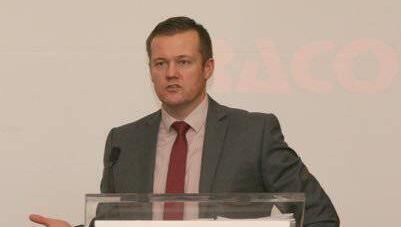
The report says that LOA 2 will involve the recruitment of 2,000 additional personnel — 700 in the Navy, 500 in Training, 500 in Joint/Cyber/SOF and 200 in the Army — to bring the strength to around 11,500.
The report also says the current strength is 8,649, which would suggest that nearly 2,850 personnel would need to be recruited.
Although it is not clear, the commission’s figures do not appear to take departures into account. Elsewhere, the report highlights the scale of this problem.
It says that while 3,196 people were recruited in the five years between 2016 and 2020, or 639 on average per year, some 3,679 people departed, equivalent to 736 on average per year. This would suggest a net loss per year of almost 100.
How that can be turned around and an additional 2,000-3,000 recruited is unclear, with the Representative Association for Commissioned Officers (Raco) saying the level of recruitment required would be “difficult” to implement.
Raco general secretary Conor King has warned that “we can’t recruit our way out of this” and that retention will have to be addressed, which, he said, costs money.
All of which highlights the scale of the task, just to get to LOA 2.
Defence Minister Simon Coveney has mentioned a four- to five-month period for a “high-level action plan” to implement the report. This is two to three months longer than it took the Department of Justice to produce an implementation plan for the Policing Commission, published in September 2018.
Mirroring the implementation bodies for that policing report, the CDF calls for an implementation oversight group, with an independent chair, and an implementation office.
Implementation of the policing plan has been somewhat slow and also difficult to track.
Who is involved in drafting the CDF action plan and who is involved in implementing it will be key.






